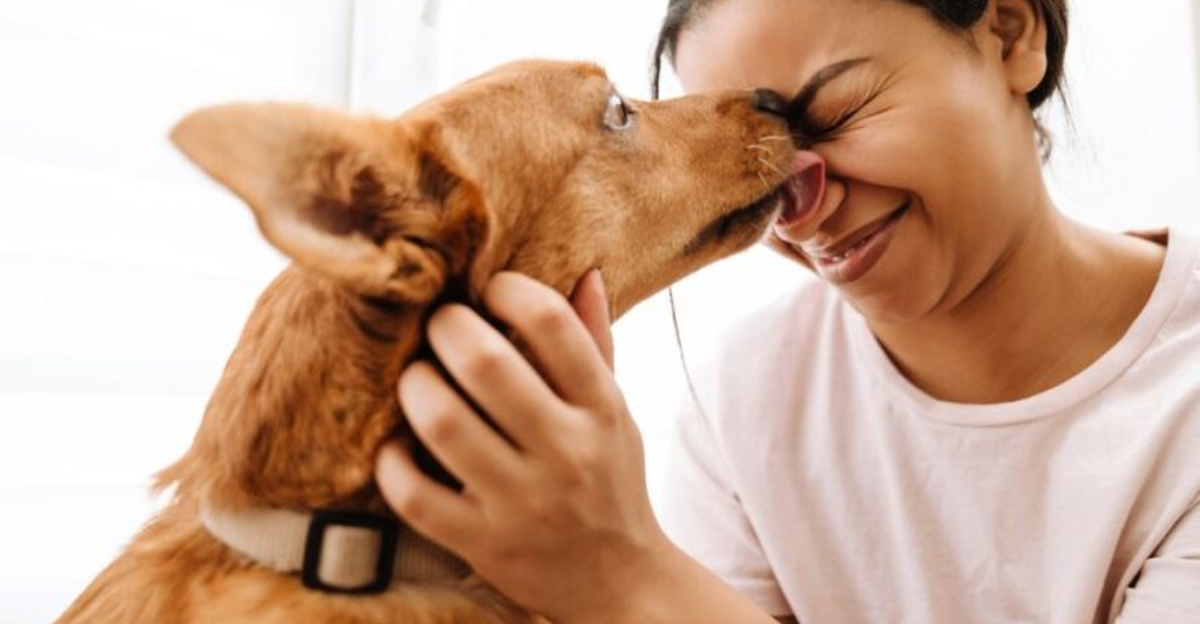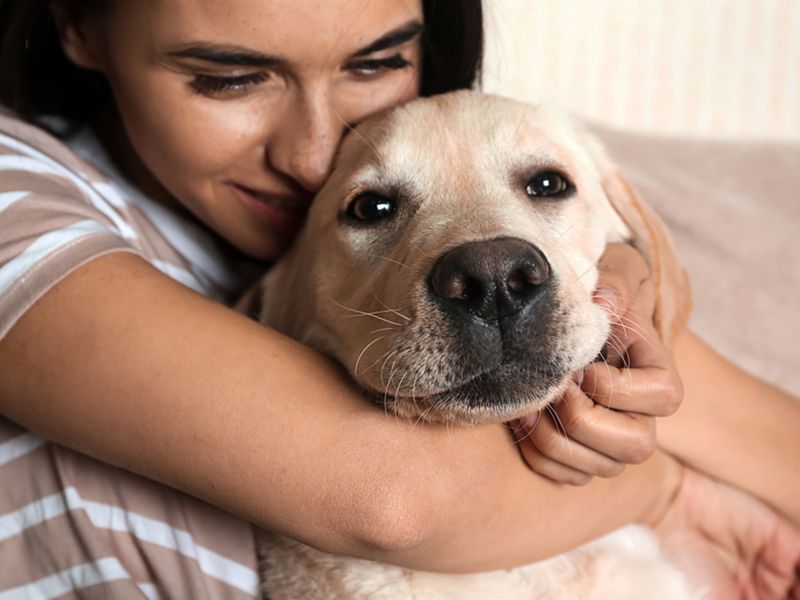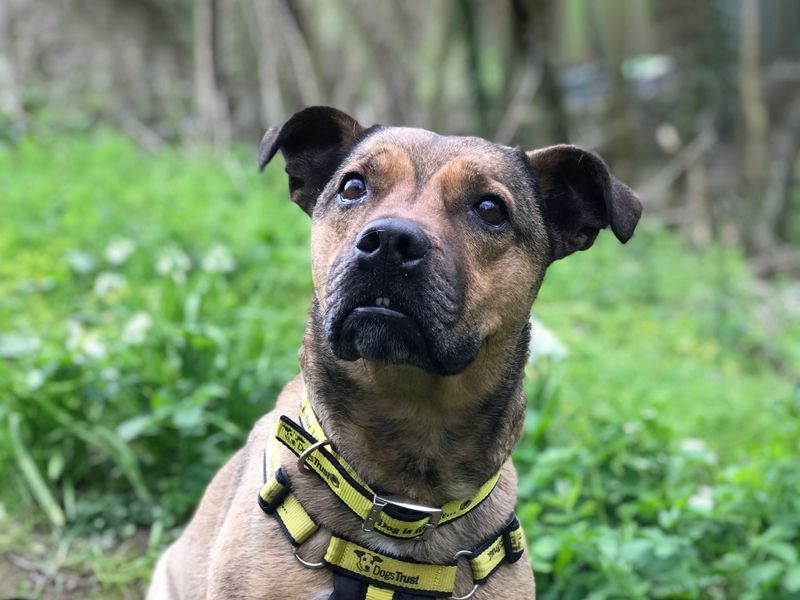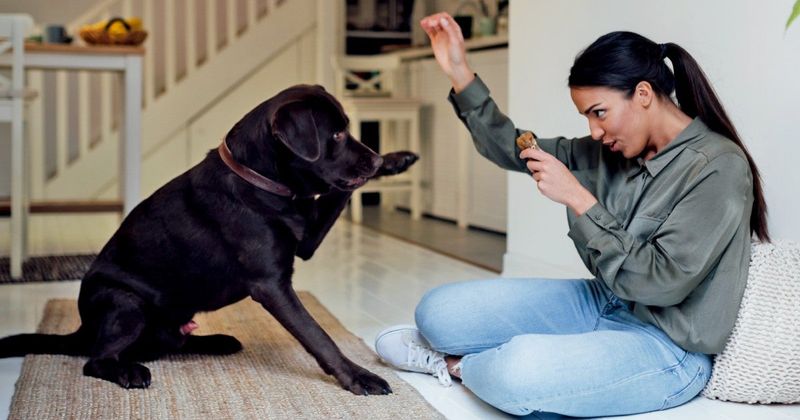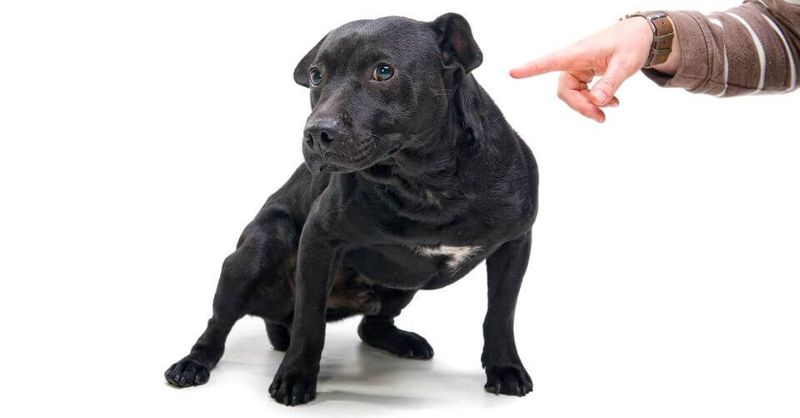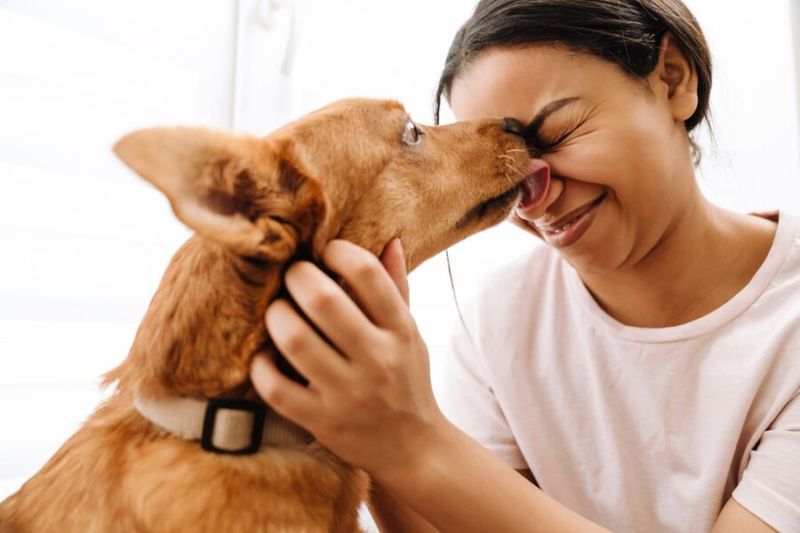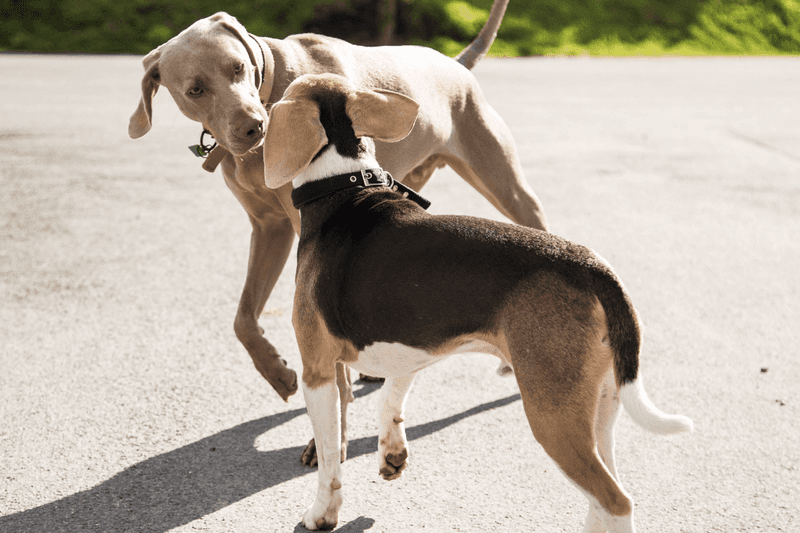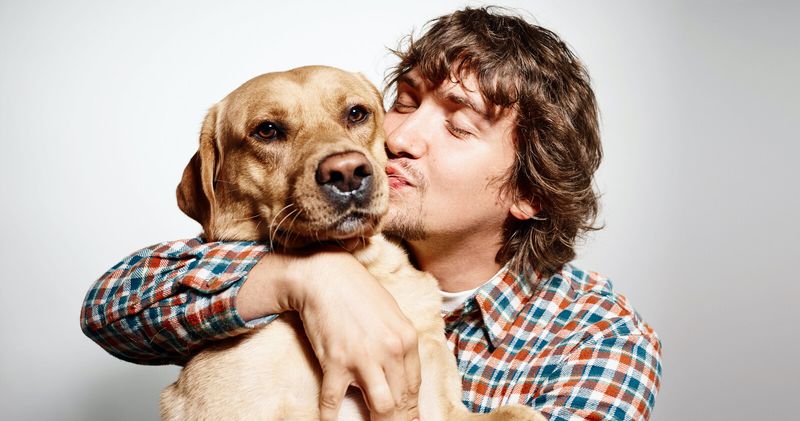Dogs are often described as humans’ best friends, sharing our homes, adventures, and sometimes even our secrets. However, there are several human behaviors that, unbeknownst to us, dogs may secretly detest. Understanding these behaviors can help nurture a more harmonious relationship with our furry companions. In this blog post, we will explore 15 human actions that dogs find less than appealing, ensuring you recognize if you’re guilty of any.
Hugging
While many humans express affection through hugs, dogs often interpret this behavior as restricting and uncomfortable. Hugging confines a dog’s movement, making them feel trapped. This is especially true for dogs that aren’t accustomed to physical closeness. Instead of a warm embrace, many dogs would prefer a gentle pat or scratch behind the ears. Observing a dog’s body language, such as tensed muscles or averted eyes, can indicate displeasure with hugs. Remember, not all dogs are the same—some may enjoy a cuddle, but it’s crucial to approach with understanding and respect for their preferences.
Direct Eye Contact
In the animal kingdom, direct eye contact can be perceived as a sign of aggression or dominance. Dogs are no exception to this rule. When a human locks eyes with a dog, it can cause anxiety and stress, especially if the dog is unfamiliar with the person. To build trust, it’s better to avoid intense staring and instead focus on indirect glances. This approach helps the dog feel more at ease and reduces the feeling of confrontation. Over time, dogs can learn to trust and accept eye contact as a form of connection, but patience is key.
Loud Noises
Dogs have sensitive hearing, making them acutely aware of loud sounds that might go unnoticed by humans. Thunderstorms, fireworks, or even a vacuum cleaner can send a dog into a panic. Their instinct is to seek shelter or escape the noise. To help dogs cope, create a quiet, safe space for them during loud events. Calming music or white noise can also assist in drowning out unsettling sounds. Being mindful of noise levels and providing comfort can ease a dog’s anxiety, ensuring they feel secure in their environment.
Overtraining
Overtraining can lead to boredom and frustration for dogs, especially if sessions are prolonged or repetitive. Dogs thrive on variety and positive reinforcement, not monotony. Short, engaging training sessions keep a dog mentally stimulated and eager to learn. It’s essential to understand and respect a dog’s limits, providing breaks and rewards to maintain their enthusiasm. A balance between training and play ensures a happy, well-behaved pet. Watching for signs of fatigue or disinterest can guide you in creating a more effective, enjoyable training routine for your canine companion.
Inconsistent Commands
Consistency is key when communicating with dogs. Inconsistent commands from different family members can confuse and frustrate them. Imagine being told “sit” means different things by various people—it would be bewildering! Establishing uniform commands that everyone adheres to helps dogs understand expectations and respond confidently. Consistent training fosters a secure environment where dogs can thrive. Clear communication and patience go a long way in building trust and a strong bond with your furry friend. Ensure everyone in the household is on the same page regarding the commands used with your dog.
Ignoring Body Language
Dogs communicate through body language, often more eloquently than words. Ignoring signs like yawning, lip licking, or a tucked tail can lead to misunderstandings. These signals might indicate stress, anxiety, or discomfort. By paying attention to these cues, humans can respond appropriately to a dog’s needs. Understanding a dog’s body language fosters a deeper connection and trust. It’s important to remember that these non-verbal cues are crucial for a harmonious relationship. Being attentive to what your dog is “saying” can prevent unwarranted stress and enhance your bond with them.
Dressing Them Up
While it might be adorable to dress dogs in cute outfits, many dogs find this practice uncomfortable. Clothing can restrict movement and feel unnatural on their bodies. Some dogs may tolerate it, but others might show signs of distress, such as frequent shaking or scratching. It’s essential to prioritize a dog’s comfort over aesthetics. If dressing up is necessary, such as for warmth, opt for simple, lightweight garments that offer freedom of movement. Observing their reactions can guide you in making choices that respect their comfort and well-being.
Forced Socialization
Not every dog enjoys the company of others. Forcing a dog into social situations can lead to stress and anxiety. Dogs, like people, have unique personalities and preferences. Some are social butterflies, while others are more reserved. It’s crucial to recognize and respect a dog’s comfort level when introducing them to new animals or environments. Allowing a dog to approach new experiences at their own pace can prevent overwhelming them. Creating positive, low-pressure social situations helps build a dog’s confidence and ensures they feel safe and secure.
Teasing
Teasing might seem harmless, but it can be frustrating for dogs. Pretending to throw a ball or tugging at their favorite toy without releasing it can lead to confusion and disappointment. Dogs thrive on clarity and straightforward interactions. While playful antics can be fun, it’s essential to ensure the play remains fair and enjoyable for both parties. Encouraging positive play without misleading gestures builds trust and strengthens the bond between you and your dog. Remember, a happy pet is one that feels understood and respected during playtime.
Strong Fragrances
Dogs’ sense of smell is incredibly sensitive, and strong fragrances can be overwhelming. Perfumes, scented candles, and air fresheners that seem pleasant to us might cause discomfort or even irritation to a dog. Their acute olfactory senses mean they experience smells more intensely than humans. To create a more comfortable environment, opt for fragrance-free products or those made specifically for pets. Being mindful of scents in your home can prevent sensory overload and ensure your dog remains relaxed and content. A dog’s comfort often lies in subtlety and natural aromas.
Unpredictable Behavior
Dogs appreciate routine and predictability, which help them feel secure. Unpredictable human actions, such as sudden movements or loud noises, can startle and confuse them. Routines provide a sense of stability, allowing dogs to anticipate and understand their environment. Sudden changes or erratic behavior can disrupt this sense of security. To foster a calm atmosphere, maintain a consistent routine and be mindful of actions that might unsettle your dog. Creating a stable, predictable environment helps dogs feel safe and nurtures a more trusting relationship with their human companions.
Prolonged Absence
Dogs are social creatures that thrive on companionship. Long periods alone can lead to sadness and anxiety. They may become despondent, waiting by the door or window for their human to return. If prolonged absences are unavoidable, consider providing entertainment, like toys or puzzles, to keep them occupied. Hiring a pet sitter or taking them to doggy daycare are also great options. Ensuring they receive plenty of exercise and attention when home can alleviate feelings of loneliness. Balancing time spent apart with quality moments together strengthens your bond with your furry friend.
Ignoring Personal Space
Just like humans, dogs appreciate their personal space. Encroaching on this space, especially when they’re resting, can cause discomfort. Dogs often retreat to their beds or a quiet corner to relax, and respecting this boundary is crucial. If a dog feels its space is invaded, it might become anxious or even defensive. Providing a designated area where your dog can retreat undisturbed helps them feel secure. Understanding and honoring their need for space fosters a trusting relationship, allowing your dog to feel safe and respected in their home environment.
Over-grooming
While grooming is essential for a dog’s health, overdoing it can lead to stress and discomfort. Frequent baths or excessive brushing might irritate their skin and strip away natural oils, leading to dryness. Dogs generally appreciate a regular grooming routine that’s balanced and gentle. Tailoring grooming to a dog’s specific needs and breed can ensure they remain comfortable. Understanding grooming as a positive experience rather than a chore promotes relaxation and well-being. Observing their reactions during grooming can guide you in finding the right balance for your pet’s care.
Being Left Out
Dogs are pack animals and want to be included in family activities. Being left out, whether during meal times or family gatherings, can lead to feelings of isolation. They thrive on social interaction and being part of the family’s daily life. Inviting them to join in, even in small ways, affirms their role within the pack. Providing them with their own space at the dinner table or involving them in walks can enhance their sense of belonging. Recognizing their need for inclusion fosters a strong bond and ensures a happy, contented pet.
